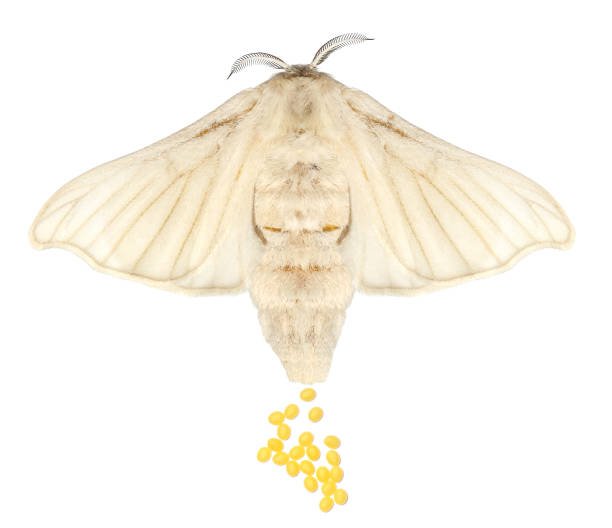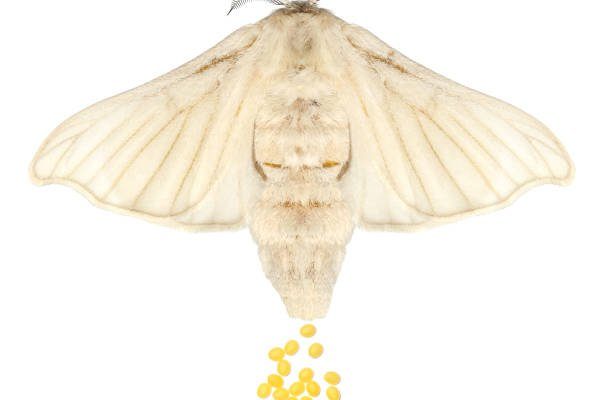
Understanding silkworms can be a bit like peering into a hidden world. They’re not just about creating that luxurious silk; they also have complex social behaviors. So, grab a cup of coffee, and let’s dive into the world of silkworms!
The Silkworm Life Cycle
Before we get into their mating behavior, it’s essential to understand the life cycle of silkworms. These creatures go through a series of stages, each crucial for their development.
Silkworms start as tiny eggs, laid by an adult female. Once they hatch, they enter the larval stage, where they munch on mulberry leaves and grow rapidly. After about a month, they spin a cocoon around themselves, entering the pupal stage. Finally, they emerge as adults, ready to mate.
– Eggs: Laid in clusters, they’re incredibly small and usually yellowish or white.
– Larvae: After hatching, they grow quickly, eating large quantities of leaves.
– Pupae: Enclosed in cocoons, this stage is crucial for transformation.
– Adults: Once they emerge, it’s mating season!
Understanding this cycle sets the stage for why their mating and egg-laying behaviors are so vital.
Mating Rituals of Silkworms
When silkworms reach adulthood, it’s time to find a mate. But how do they go about this? The female silkworm produces pheromones—a fancy word for chemical signals—that attract males from quite a distance. Think of it as a silkworm’s way of sending out party invites.
Males are typically smaller than females and can sense these pheromones with their antennae. When a male detects a female’s scent, he’ll start a dance—fluttering around and sometimes even bumping into her. This courtship behavior is surprisingly intriguing.
– Scent Attraction: Males can smell a female’s pheromones from over 100 feet away.
– Courtship Dance: Males exhibit specific movements to impress females.
– Quick Mating: Once a female is receptive, mating happens relatively quickly, often lasting a few hours.
While it might not look like much from afar, the mating ritual is a critical part of ensuring the next generation appears.
Egg Laying Process
Once mating has successfully occurred, the female silkworm prepares to lay her eggs. It’s almost as if she’s planning for the future, ensuring that her offspring have the best chance of survival. She typically lays between 200 to 500 eggs at once, depending on her size and health.
The eggs are laid on a suitable surface, often where the larvae will have easy access to food once they hatch. Here’s a breakdown of the egg-laying process:
1. Choosing a Location: Females prefer surfaces that are warm and safe.
2. Laying the Eggs: They deposit the eggs in clusters, which helps protect them from predators.
3. Creating a Protective Coating: Sometimes, females even cover the eggs with a thin layer of silk.
The choices a female makes during this process are crucial for the survival of her young, making her an incredibly important figure in their lifecycle.
Caring for the Eggs
Although silkworms don’t stay with their eggs, the care they put into laying them is paramount. After the eggs are laid, they require specific conditions to ensure they hatch successfully.
Factors like humidity and temperature play a significant role. The ideal conditions for silkworm eggs are about 70% humidity and temperatures around 25°C (77°F). It’s interesting to note that if the conditions are off, the chances of the eggs hatching can drop dramatically.
– Temperature: Eggs need warmth to develop properly.
– Humidity: Too much or too little can affect hatch rates.
– Light Exposure: Eggs typically thrive in dark, warm environments.
This careful balance is what helps ensure that those tiny eggs can eventually grow into the next generation of silk-producing champions.
Common Challenges in Mating and Egg Laying
Like any living creature, silkworms face challenges in their mating and egg-laying processes. For example, if there’s a lack of suitable mates or if environmental conditions aren’t optimal, it can lead to issues.
Let’s explore some common problems:
– Poor Conditions: Extreme temperatures or humidity levels can affect both mating and egg laying.
– Inadequate Nutrition: If silkworms don’t get enough nutrients, it can impact their reproductive health.
– Pest Infestation: Other insects or pests can threaten silkworms, disrupting their lifecycle.
These challenges highlight how delicate the balance is in nature, especially for creatures like silkworms that play such an essential role in the ecosystem.
The Importance of Silkworm Mating and Egg Laying
You might be wondering: why does all this matter? Silkworms are not just vital for producing silk; they also play a role in agriculture and biodiversity. Their mating behaviors and egg-laying practices help ensure the continuation of their species, which in turn supports the ecosystems around them.
Moreover, understanding these behaviors can also help farmers and researchers improve sericulture—a fancy term for silk farming. By fostering better mating conditions and environments for egg-laying, we can promote healthier silkworm populations.
– Supporting Agriculture: Strong silkworm populations contribute to the silk industry.
– Biodiversity Benefits: Healthy ecosystems rely on the continued survival of various species.
– Research Opportunities: Understanding their behaviors opens doors for new discoveries.
So, the next time you see a silk scarf, remember there’s a lot more to those threads than meets the eye!
Silkworm mating behavior and egg laying are more than just fascinating topics; they reveal the intricate dance of life that happens right under our noses. From the alluring pheromones to the careful selection of egg-laying sites, every detail matters.
As we’ve seen, these small creatures impact not just their own species but also the broader ecosystem and industries that rely on them. Next time you think about silkworms, consider the delicate balance they maintain—each mating season is a new opportunity for survival and continuity. So, here’s to the unsung heroes of silk, playing their part in nature’s grand story!

